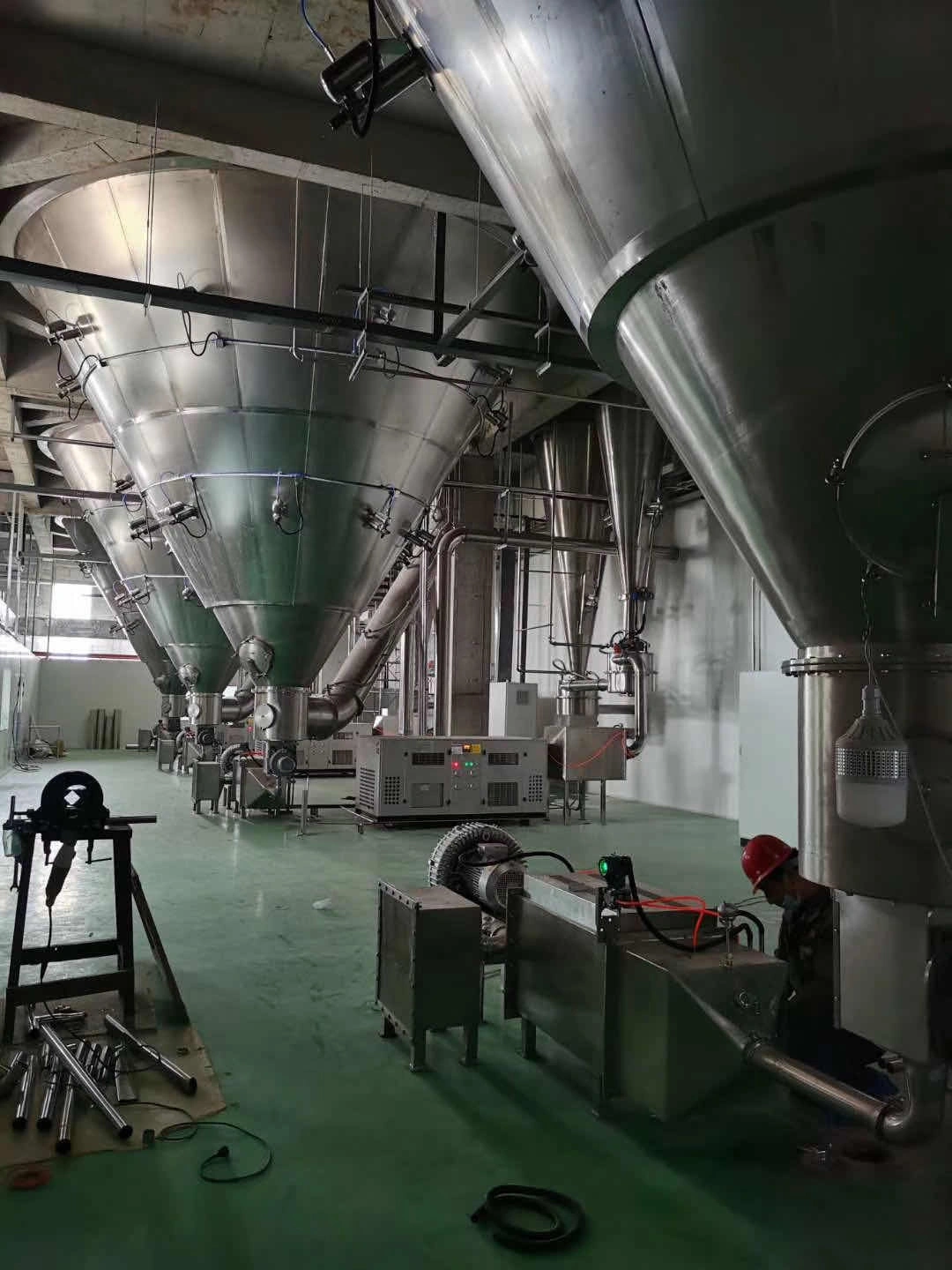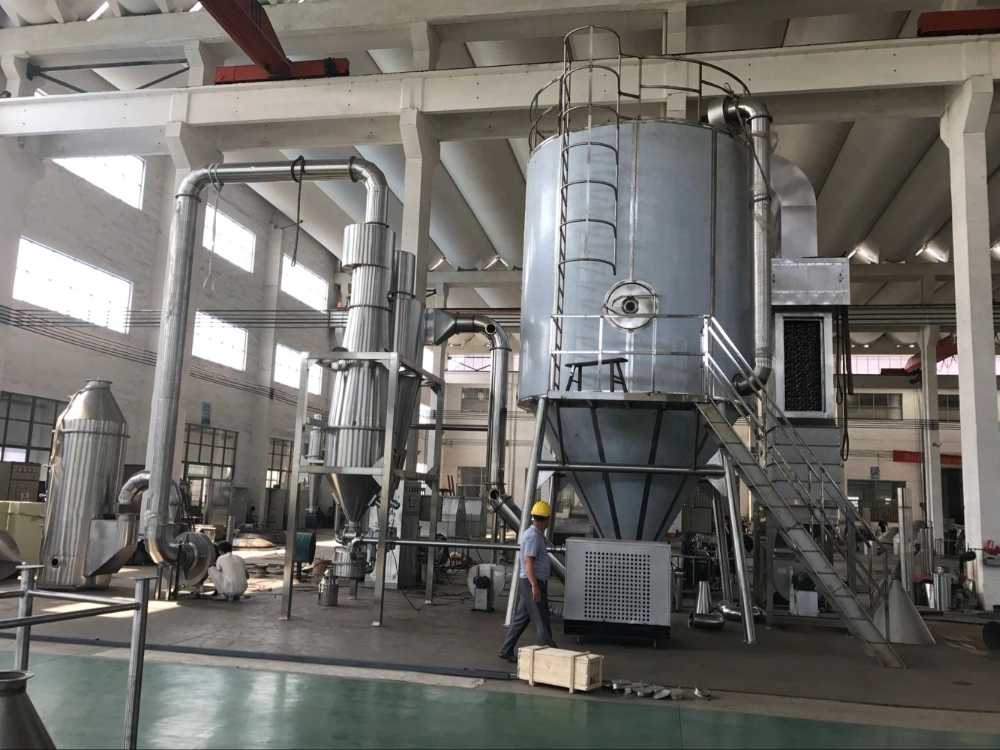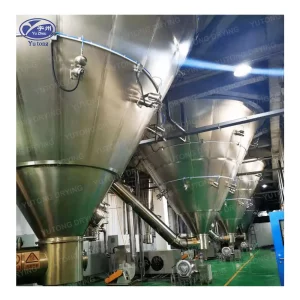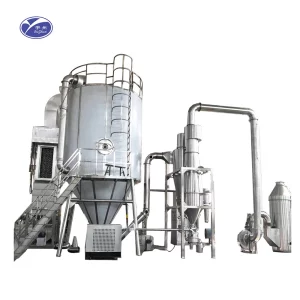Table of Contents
Product Detail
Spray drying is a fascinating process that transforms liquid materials into dry powders in a single step. This technique is widely used in various industries, including food, pharmaceuticals, and chemicals. Worcester Polytechnic Institute (WPI) is a prominent player in the development and utilization of spray drying equipment. In this article, we’ll delve into the concept of spray drying, explore WPI’s role in advancing this technology, and discuss its applications.
What Is Spray Drying?
Spray drying is a method of producing a dry powder from a liquid or slurry by rapidly drying with a hot gas. The fundamental principle involves atomizing the liquid into a fine mist, which is then exposed to a hot air stream. This causes the liquid droplets to evaporate rapidly, leaving behind solid particles. The result is a dry powder with uniform particle size.
The Atomization Process
Atomization is the critical first step in spray drying, where the liquid is transformed into a fine mist of droplets. This is achieved using various types of atomizers, such as rotary, nozzle, and ultrasonic atomizers. Each type has its unique mechanism and is selected based on the specific requirements of the product being dried. For instance, rotary atomizers are often used for high-volume drying, while nozzle atomizers may be preferred for smaller batches requiring precise control.
The Drying Chamber Dynamics
Once atomized, the droplets enter the drying chamber, which is designed to optimize heat and mass transfer. The chamber’s design and the flow dynamics significantly influence the drying rate and the quality of the final powder. Factors such as air temperature, humidity, and flow pattern are meticulously controlled to ensure efficient drying while preserving the desired properties of the powder. The drying chamber must be constructed to handle the thermal stresses and maintain consistent conditions throughout the process.
Cyclone Separator Functionality
The cyclone separator is crucial in separating the dried particles from the exhaust air. This component operates on the principle of centrifugal force, where the heavier particles are driven to the walls of the cyclone and collected, while the lighter air is exhausted. The design and efficiency of the cyclone separator can significantly impact the yield and purity of the final product. High-efficiency cyclones are often employed to maximize powder recovery and minimize losses.
Advanced Powder Collection Systems
The final step in the spray drying process is collecting the dried powder. Modern systems are equipped with advanced filtration and collection technologies to ensure that the final product is free from contaminants and meets the desired specifications. These systems often include bag filters or electrostatic precipitators to capture fine particles that escape the cyclone. The choice of collection system depends on the nature of the product and the required purity standards.
The Role of Worcester Polytechnic Institute (WPI) in Spray Drying
Worcester Polytechnic Institute (WPI) has been at the forefront of research and development in spray drying. Their contributions are well-documented in various spray dryer reports. WPI’s work focuses on optimizing spray drying equipment and processes to enhance efficiency and product quality.
Pioneering Research Initiatives
WPI has launched numerous research initiatives aimed at pushing the boundaries of spray drying technology. Their work includes exploring new materials for atomizers and chambers that can withstand higher temperatures and pressures, thus improving the equipment’s robustness. Additionally, WPI investigates the thermodynamics of drying to develop more energy-efficient processes, reducing the overall environmental impact.
Innovations in Spray Drying Techniques
The institute has pioneered several innovations in spray drying techniques, such as multi-stage drying processes that enhance energy utilization and product consistency. By incorporating computational fluid dynamics (CFD) simulations, WPI researchers can model the drying process in detail, allowing for the optimization of chamber designs and airflow patterns. These innovations lead to improved control over particle size distribution and moisture content in the final product.
Industry Collaborations and Partnerships
WPI fosters collaborations with leading industry players, leveraging their academic expertise to address real-world challenges. Partnerships with companies like Relco allow for the application of WPI’s research findings in practical settings, facilitating the development of customized spray drying solutions. These collaborations not only enhance the industry’s capabilities but also provide students and researchers at WPI with invaluable industry exposure and experience.
Educational Programs and Knowledge Transfer
In addition to research, WPI is dedicated to educating the next generation of engineers and scientists in spray drying technology. Through specialized courses, workshops, and seminars, the institute ensures that students are well-versed in both the theoretical and practical aspects of spray drying. This commitment to education provides a steady flow of skilled professionals who can contribute to the advancement of the industry.
Applications of Spray Drying
Spray drying technology finds applications across a broad range of industries due to its ability to produce consistent and high-quality powders. Here are some of the primary sectors utilizing this technology:
Food Industry Applications
In the food industry, spray drying is commonly used to produce powdered products such as milk powder, coffee, and flavorings. The process ensures that the nutritional content and flavor of the original liquid are preserved. Additionally, spray drying is used to create encapsulated flavors and nutrients, providing stability and enhanced shelf-life for sensitive ingredients.
Pharmaceutical Industry Applications
The pharmaceutical sector utilizes spray drying to create drugs with precise particle sizes and controlled release properties. This method is ideal for producing inhalable medicines and enhancing the solubility of poorly soluble drugs. Spray drying also enables the production of amorphous solid dispersions, which can significantly improve the bioavailability of active pharmaceutical ingredients.
Chemical Industry Applications
In the chemical industry, spray drying is used to produce catalysts, pigments, and detergents. The uniform particle size and consistency of the powders are crucial for these applications. Moreover, spray drying allows for the precise control of chemical reactions, facilitating the production of complex compounds and intermediates with high purity and consistency.
Emerging Fields and Novel Uses
Beyond traditional industries, spray drying is finding novel applications in emerging fields such as biotechnology and materials science. In biotechnology, spray drying is used to produce probiotics and other bioactive compounds in powder form, enhancing their stability and shelf life. In materials science, the technique is employed to synthesize advanced materials like nanoparticles and aerogels, which have unique properties and potential applications in various high-tech industries.
Advantages of Spray Drying
Spray drying offers several advantages that make it a preferred method for producing dry powders:
- Speed and Efficiency: The entire process is rapid, converting liquid to powder in a single step.
- Uniform Particle Size: The atomization process ensures consistent particle size, which is essential for product quality.
- Preservation of Properties: The gentle drying process helps retain the nutritional and functional properties of the original material.
- Scalability: Spray drying can be scaled up or down to accommodate different production volumes.
Environmental and Economic Benefits
In addition to its technical advantages, spray drying offers environmental and economic benefits. By optimizing energy use and reducing waste, the process can be made more sustainable, minimizing its ecological footprint. Economically, the ability to produce high-quality powders efficiently can lead to cost savings and increased competitiveness for manufacturers.
Challenges in Spray Drying
Despite its advantages, spray drying also presents specific challenges:
- Energy Consumption: The process requires significant energy input, primarily for heating the air.
- Product Yield: Ensuring high product yield without compromising quality can be challenging.
- Equipment Costs: The initial investment in spray drying equipment can be substantial.
Addressing Energy Consumption Issues
One of the primary challenges in spray drying is its high energy consumption, which impacts both operational costs and environmental sustainability. Researchers and engineers are exploring various strategies to address this issue, such as implementing heat recovery systems and optimizing airflow dynamics. Additionally, alternative energy sources, like solar or waste heat, are being investigated to reduce the carbon footprint of spray drying operations.
Maximizing Product Yield and Quality
Achieving high product yield while maintaining quality is a delicate balance that requires precise control over the drying parameters. Innovations in sensor technology and process monitoring are being leveraged to provide real-time data, enabling operators to make informed adjustments. Advanced process control systems are also being developed to automate these adjustments, ensuring optimal performance and consistency.
Overcoming Equipment Cost Barriers
The high cost of spray drying equipment can be a barrier, particularly for small and medium-sized enterprises. To address this, modular and scalable systems are being designed to allow for gradual investment and expansion as needed. Furthermore, leasing options and shared facilities are emerging as viable solutions, providing access to state-of-the-art equipment without the need for substantial upfront capital.
The Future of Spray Drying
As industries continue to demand efficient and reliable drying methods, the future of spray drying looks promising. Continued research and development, led by institutions like WPI, will likely lead to further advancements in spray dryer technology.
Innovations on the Horizon
Future innovations may focus on enhancing energy efficiency, developing environmentally friendly drying processes, and integrating automation and control systems for improved precision and consistency. Artificial intelligence and machine learning to optimize drying parameters and predict outcomes is also an exciting area of research, promising to revolutionize spray drying.
Cross-Industry Collaboration and Integration
The future of spray drying will likely involve increased collaboration between industries, fostering the exchange of ideas and technologies. This cross-industry integration can lead to the development of hybrid processes that combine the best aspects of different drying methods, unlocking new possibilities and applications.
Embracing Digital Transformation
The digital transformation of manufacturing processes is set to play a significant role in the evolution of spray drying. The adoption of digital twins, IoT devices, and data analytics will enable more efficient and flexible operations, facilitating rapid response to market demands and enhancing product innovation.
Conclusion
Spray drying is a versatile and effective method for producing dry powders from liquids. With the contributions of Worcester Polytechnic Institute and other industry leaders, the technology continues to evolve, offering improved efficiency and product quality. Whether in the food, pharmaceutical, or chemical industry, spray drying remains a crucial technology with a bright future.
In summary, understanding spray drying and its applications provides valuable insights into how everyday products are manufactured. Institutions like WPI play a vital role in advancing this technology, ensuring its continued relevance and success in various industries. As research and innovation continue to drive improvements, spray drying will undoubtedly remain a cornerstone of modern manufacturing, adapting to meet the challenges and opportunities of the future.
Specifications
|
spec
|
ZPG-25
|
ZPG-50
|
ZPG-80
|
ZPG-100
|
ZPG-150
|
ZPG-200
|
ZPG-300
|
|
|
evaporation capacity(kg/h)
|
25
|
50
|
80
|
100
|
150
|
200
|
300
|
|
|
process amount of material liquid(kg/h)
|
25-34
|
50-68
|
80-108
|
100-135
|
150-203
|
200-270
|
300-406
|
|
|
output of finished pcoduct(kg/h)
|
4.8-7.2
|
9.2-14
|
14.8-22.4
|
18.4-28
|
24-42
|
36.8-56.4
|
55-85
|
|
|
solid content of material liquid( %)
|
18-30
|
|||||||
|
moisture content of finished product( %)
|
3-5
|
|||||||
|
electric power(kw)
|
63
|
132
|
153
|
204
|
246
|
330
|
||
|
heat source
|
Steam pius electricity
|
|||||||
|
Collecting method of product and its efficiency
|
Grade one or two or three stage cyclone wet dust remover is greater than or equal to 95%
|
|||||||
|
automatic control meters and instruments
|
indicator of not air and exhaust air temperature
|
|||||||
|
temperature of air inlet(℃)
|
160-220
|
|||||||
|
temperature of air outlet(℃)
|
80-100
|
|||||||
|
L
|
7000
|
8000
|
9800
|
11000
|
12200
|
14100
|
15000
|
|
|
overal dimensions(mm)
|
W
|
4000
|
5000
|
5700
|
6200
|
7000
|
7800
|
9000
|
|
H
|
6200
|
6900
|
8000
|
8900
|
10750
|
11900
|
13000
|
|
Applications
Applicable Industries: Building Material Shops, Manufacturing Plant, Machinery Repair Shops, Food & Beverage Factory, Farms, Restaurant, Retail, Food & Beverage Shops











